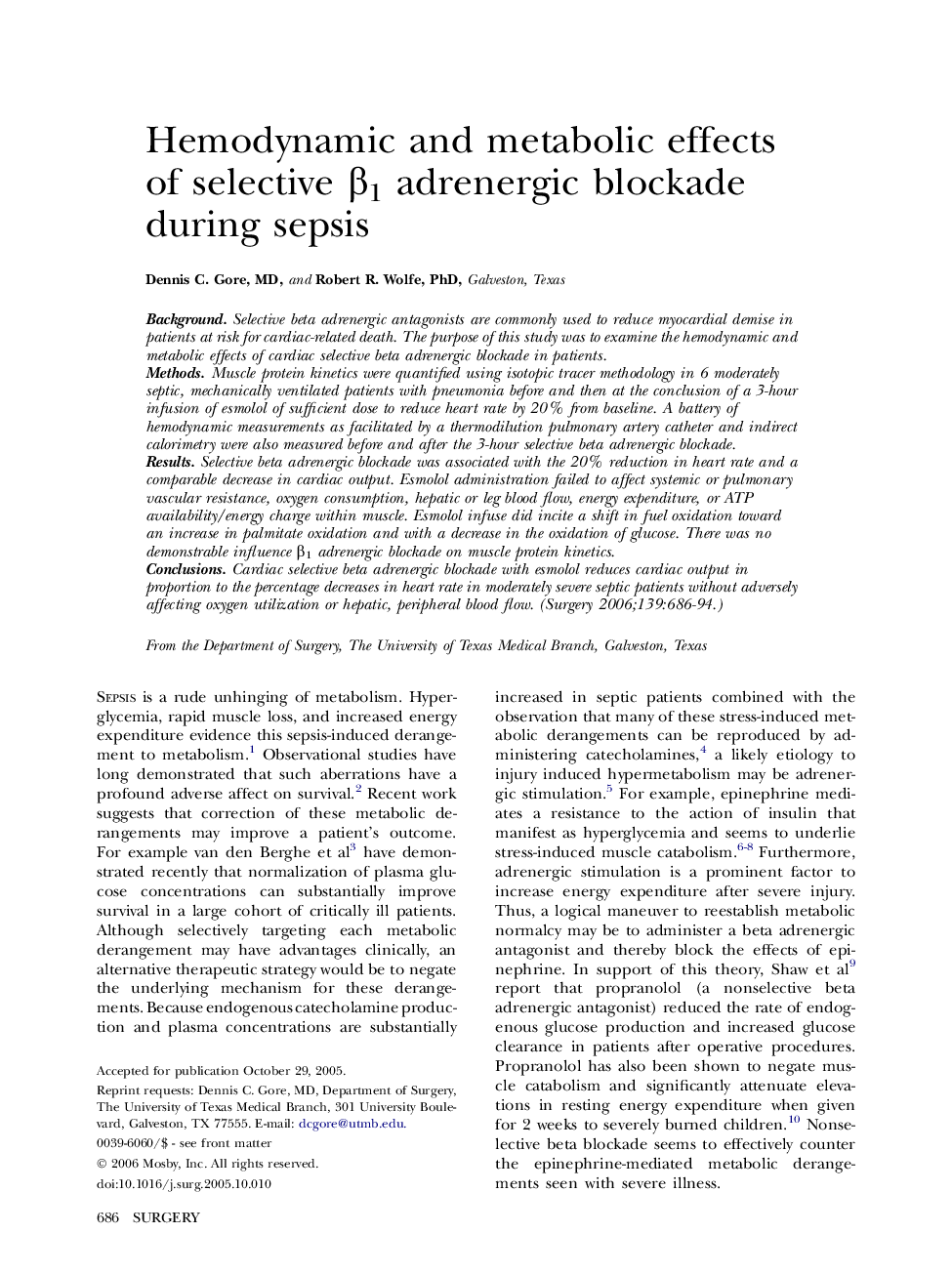| Article ID | Journal | Published Year | Pages | File Type |
|---|---|---|---|---|
| 4310081 | Surgery | 2006 | 9 Pages |
BackgroundSelective beta adrenergic antagonists are commonly used to reduce myocardial demise in patients at risk for cardiac-related death. The purpose of this study was to examine the hemodynamic and metabolic effects of cardiac selective beta adrenergic blockade in patients.MethodsMuscle protein kinetics were quantified using isotopic tracer methodology in 6 moderately septic, mechanically ventilated patients with pneumonia before and then at the conclusion of a 3-hour infusion of esmolol of sufficient dose to reduce heart rate by 20% from baseline. A battery of hemodynamic measurements as facilitated by a thermodilution pulmonary artery catheter and indirect calorimetry were also measured before and after the 3-hour selective beta adrenergic blockade.ResultsSelective beta adrenergic blockade was associated with the 20% reduction in heart rate and a comparable decrease in cardiac output. Esmolol administration failed to affect systemic or pulmonary vascular resistance, oxygen consumption, hepatic or leg blood flow, energy expenditure, or ATP availability/energy charge within muscle. Esmolol infuse did incite a shift in fuel oxidation toward an increase in palmitate oxidation and with a decrease in the oxidation of glucose. There was no demonstrable influence β1 adrenergic blockade on muscle protein kinetics.ConclusionsCardiac selective beta adrenergic blockade with esmolol reduces cardiac output in proportion to the percentage decreases in heart rate in moderately severe septic patients without adversely affecting oxygen utilization or hepatic, peripheral blood flow.
